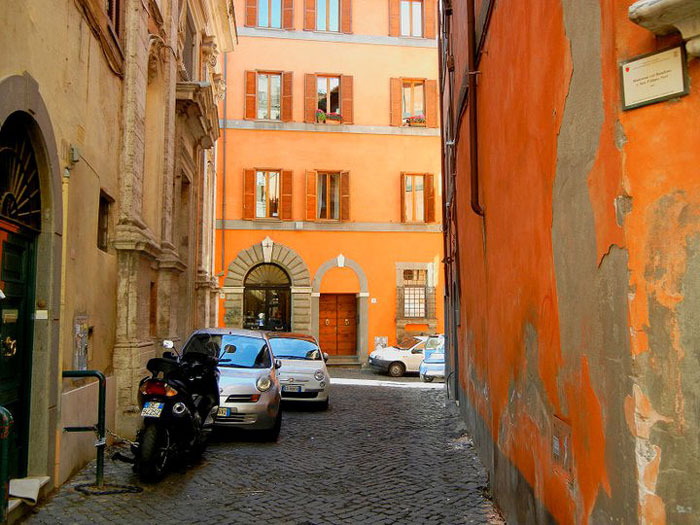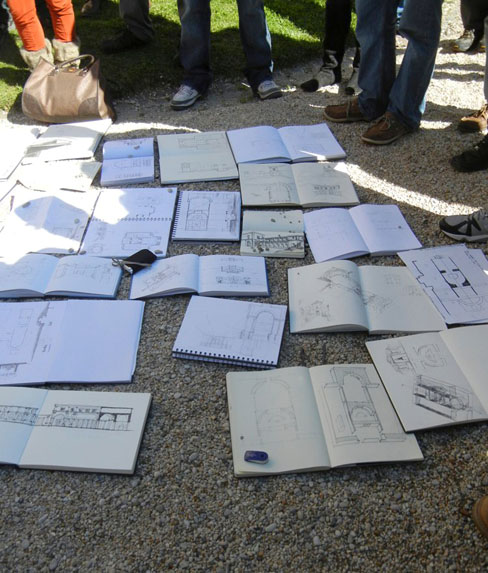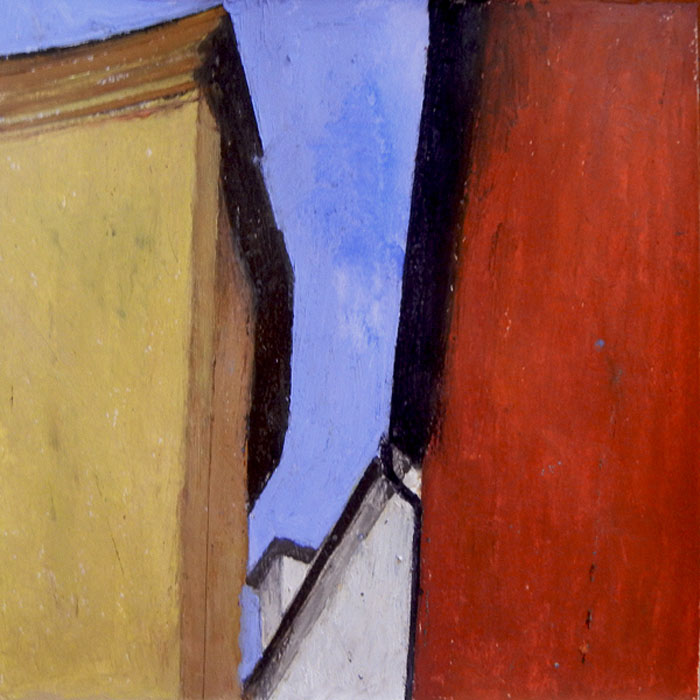
Professor Laura Terry took this photo, titled “Roman Orange,” on one of the small streets leading to the studio at Palazzo Taverna in Rome this spring.
By Liana Bugslag
At almost 3,000 years old, Rome is often referred to as “The Eternal City.” For Laura Terry, the magnitude of history within the city is why it is so important for students at the University of Arkansas to experience one of the world’s epicenters of architecture. With deep traditions preserved alongside the evolution of an urban area, it is a twist on a modern city entwined with some of the world’s oldest history.
Through the University of Arkansas Rome Center, the Fay Jones School of Architecture and the university have had a presence in Rome since 1986. Architecture students are required to study abroad as part of their five-year professional degree plan.
Terry, an associate professor of architecture, has taught at the university since 1999. Two years ago, she was appointed the liaison for the school’s study abroad trip to Rome. As liaison, her role is to facilitate the consistent pedagogical goals between the Rome Center and the department of architecture, as well as to oversee the students as they go to their classes in Rome, and settle into quite a different way of living than most U of A architecture students are used to.
“The University of Arkansas is unique, because Fayetteville is so isolated,” Terry said. “That is why we enforce the importance of traveling in our program, so that our students can go see what we are talking about in class. Especially since so many of our students are coming from rural areas.”
With the required study abroad component, architecture students have the choice to participate in either the semester-long trip to Rome or a 10-week summer trip to Mexico City. Though students can choose between these two very different experiences, each is equally rich.
Mexico City has a larger population than Rome, and there is less preservation of buildings compared to Rome. Even though Rome has contemporary elements, Mexico City has a different urban feel, resulting in an entirely different experience. About one-fourth of the students go on both trips.
The structure of the program in Rome is similar to the program the students in Fayetteville are enrolled in, Terry said. While in Italy, students study at the Rome Center. They study alongside students from Auburn University, Philadelphia University, Rensselaer Polytechnic Institute in New York and Louisiana State University.
Architecture students have a full course load of 12 to 15 hours, including a studio. There are required courses that the students must take as well as two elective courses. A mandatory course is “Architecture of the City,” in which students study the cultural, social, and political aspects of history that act as layers in the urban development of the city of Rome. The course involves both lecture and on-site drawing. Additionally, students must take another on-site drawing course, where they participate in on-site analysis.
“This course reaches one of my main goals for students, which is improving in their drawing skills,” Terry said.

When in Rome, students often “throw down” their sketchbooks to discuss their work. These sketches from Villa Giulia were done as part of the “Architecture of the City” course.
Students are in classes from Monday through Thursday, and then are encouraged to travel via train to different cities across Europe on their three-day weekends. There are some coordinated travel weekends to Florence, Tuscany, Venice, the Veneto region, and Pompeii, but the philosophy of the Rome experience is to travel as much as possible. With cheap transportation, students are able to experience much of Western Europe throughout their stay.
“Students are able to see first-hand the evidence of timelessness in a city,” Terry said. “They can talk about subject matter in their classes, and then hop on a bus or a train and be standing in front of the Pantheon or the Colosseum. Architecture is a lifelong education, and traveling allows students to continuously grow and develop. In a way, it allows pieces of the puzzle to all come together.”
Rome helped Terry direct her own career path. After being inspired by her brother, who studied landscape architecture, Terry attended Auburn University as an architecture student, where she had the opportunity to travel to Rome.
It was in Rome, that Terry first discovered her passion for painting. After working at an architecture firm, she realized the profession was not for her and turned to painting. But, when Terry received a call from one of her former professors who was the architecture department head at the U of A at the time, she found an opportunity to combine two of her passions and be a part of an architecture program while still focusing on her painting.
Terry has exhibited her artwork in Savannah, Ga., Atlanta, Minneapolis, Los Angeles and New York, and her work was included in New American Paintings, a juried publication.
“It definitely gives me a different background than my colleagues, but I think that is good for students as they are growing to have different mentors to talk to.”

“Roman Skies 16” is one in a series of 24 oil pastels focusing on the space between the buildings, looking up. Professor Laura Terry painted this piece during the spring 2013 semester in Rome.